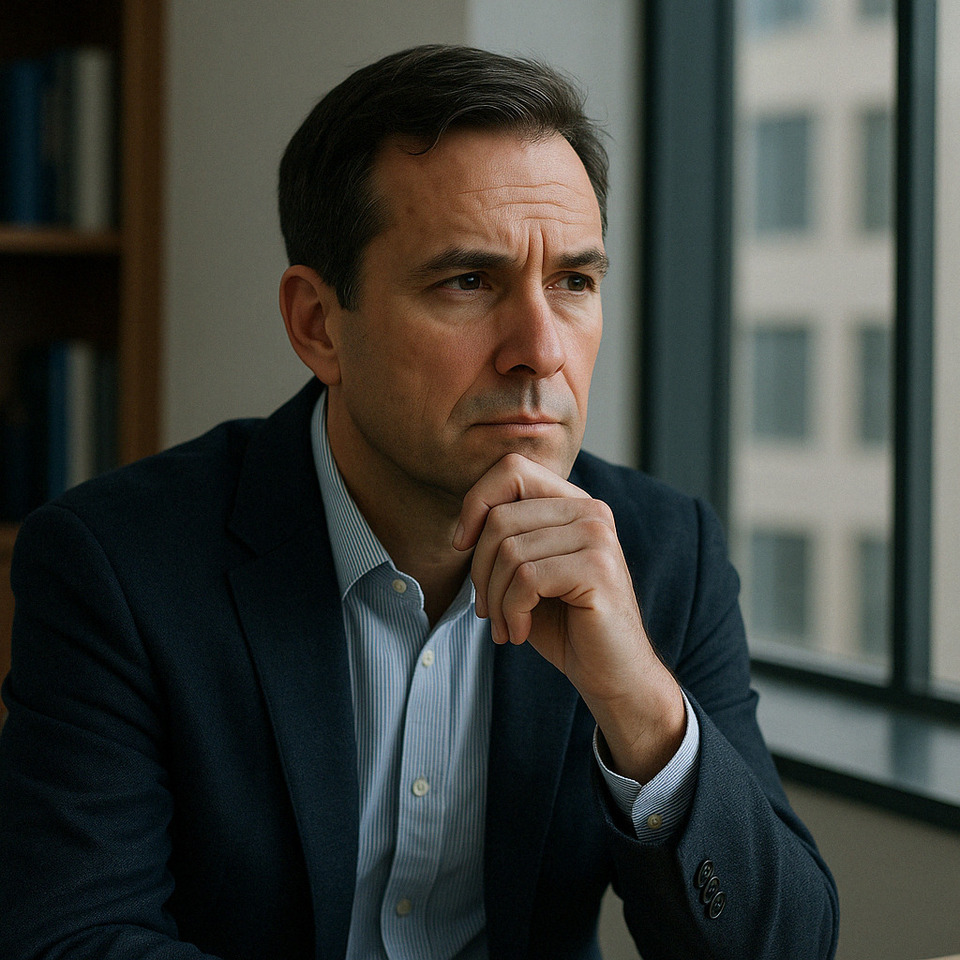How To Develop Strategic Thinking
How To Develop Strategic Thinking
- For leaders who want to stop managing and start shaping the future
By Mark Wager
Strategic thinking isn’t about being clever, nor is it reserved for boardroom visionaries who speak in jargon and plan decades ahead. It’s a mindset—one that enables leaders to see beyond the noise of the moment and make decisions today that will still hold value tomorrow. Yet too many leaders, even good ones, get stuck in the immediacy of doing. They focus on performance, outcomes, KPIs—important, yes—but never quite find the altitude to ask the bigger questions.
When I coach leaders, especially those new to senior roles, I often hear the same thing: “I want to be more strategic, but I just don’t have the time.” What they’re really saying, though, is that they’ve never been taught how to think strategically. Because let’s be honest—most of us have been trained to solve problems, not anticipate them. We’ve been rewarded for reacting quickly, not for sitting still and thinking deeply.
So, how do you learn to think strategically? It starts with a decision. A decision to pause, to zoom out, and to approach leadership as a long game rather than a daily grind.
One of the most profound shifts a leader can make is learning to step away from the fire. Not forever—just long enough to ask, “Where is this all going?” Because leadership, at its core, isn’t about being the busiest person in the room. It’s about being the calmest. The one who sees the game a few moves ahead. And that kind of clarity doesn’t arrive when your calendar is crammed from morning to night.
Instead of trying to think strategically on demand, strategic leaders design time into their week to think. Not to reply to emails or tweak reports—but to think. They use that time to look for patterns, to consider what the data is whispering just beneath the obvious trends, and to play out future scenarios in their mind. It’s not wasted time. It’s where insight lives.
But clarity doesn’t just come from silence. It also comes from better questions. Strategic thinkers aren’t the ones with all the answers. They’re the ones asking the most uncomfortable questions—the ones no one else wants to voice. “What are we doing that no longer serves us?” “If a new competitor launched today, what would they do differently?” “Where are we winning, and does it still matter if we win there?”
Questions like these have the power to challenge assumptions that have quietly calcified into dogma. Strategic thinkers know that success has a way of blinding us, of convincing us that what worked before will always work again. But it won’t. Not in a world that’s shifting under our feet.
That’s why perspective is so crucial. And not just your own. In fact, one of the biggest breakthroughs I see in leaders happens when they stop relying on their own thinking and start borrowing perspective. They ask the junior team member what they think. They talk to customers—not through surveys, but face to face. They read things outside their industry, seek out disagreement, even argue with themselves. Not because they lack conviction, but because they know strategy isn’t built in an echo chamber. It’s built in the tension between competing truths.
The leaders who go furthest are the ones who embrace that discomfort. Who realise that strategic thinking isn’t about certainty—it’s about curiosity. It’s about being willing to sit with a problem long enough that it reveals something new. And sometimes, that means letting go of the illusion of control.
There’s a trap I see often. Leaders mistake ambition for strategy. They say they have a strategy, but what they really have is a wish list. “We want to grow.” “We want to expand.” “We want to be market leaders.” These are fine aspirations—but they’re not strategy. Real strategy is messy. It involves trade-offs. It requires deciding not just what you’re going to do, but what you’re willing to let go of. And that’s hard. Especially when those things once made you successful.
But strategic thinking demands it. It requires you to be brave enough to say no, not because the idea is bad, but because it doesn’t take you where you need to go. Every good strategy is a narrowing of focus. A deliberate commitment to a direction—knowing full well that others might disagree. That’s the burden of leadership.
And yet, while strategy demands courage, it also demands imagination. Great leaders are often great storytellers, not because they deal in fiction, but because they understand that people don’t follow plans—they follow purpose. Strategic thinkers know how to translate complex ideas into a compelling narrative. They can stand in front of a room and say not just what we’re doing, but why it matters. They can paint a picture of the future vivid enough for others to want to build it.
If you want to think more strategically, start by asking yourself: What future am I creating? Not just for the business, but for the people who’ve chosen to follow you. Because strategy isn’t cold logic. It’s human. It’s emotional. It’s full of belief. And when it’s done well, it energises people.
Still, none of this happens in chaos. Strategic thinking requires space. Not luxury retreats or offsites (though they help), but mental space. That might mean protecting a block in your diary every Friday morning where you switch off your phone and just reflect. It might mean taking a walk without a podcast. Or starting your day by writing down the three biggest long-term challenges your team is facing—and doing nothing else until you’ve wrestled with them. Don’t wait for the rare quiet day to think. You’ll be waiting a long time. Strategy is a discipline. It’s what you make time for.
Because here’s the truth: being strategic doesn’t mean doing more. It means thinking better. It means slowing down long enough to move forward with purpose. It means recognising that your job, as a leader, is not just to get things done—it’s to ensure that the things you do are taking you in the right direction.
So the next time you feel overwhelmed, stuck in the weeds, pulled in ten directions—pause. Lift your eyes. Ask yourself: Where are we going? What’s changing? And what am I not seeing yet that I need to see now?
Strategic thinking doesn’t arrive in a single flash of brilliance. It emerges in the quiet, in the questions, in the uncomfortable trade-offs, and the stories we choose to tell. It’s not easy—but it’s learnable. And if you want to lead not just with action, but with intention—then it’s time to make strategic thinking a daily discipline, not a yearly ambition.
Posted: Wednesday 23 April 2025

